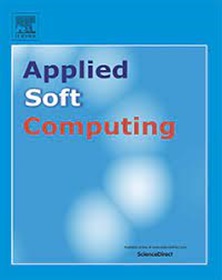基于动态自关注网络的动态社交网络意见形成及其在直播中的应用
IF 7.2
1区 计算机科学
Q1 COMPUTER SCIENCE, ARTIFICIAL INTELLIGENCE
引用次数: 0
摘要
意见动力学(Opinion Dynamics, OD)是研究复杂社会网络中群体意见演变的一个广泛使用的框架。然而,大多数现有模型主要关注静态网络或小规模动态网络,对大规模动态网络的探索很大程度上不足。为了解决这一差距,本文研究了大规模动态社交网络中群体意见和行为预测的演变,并以直播数据为例进行了研究。具体而言,我们提出了两个新的模型:(1)动态社区网络(DCN)模型,该模型基于现实世界的大数据构建动态网络;(2)实时动态自注意网络Hegselmann-Krause (RT-DySAT-HK)模型,该模型将动态图神经网络(dgnn)与OD相结合,模拟群体意见的演变并预测行为。通过实证分析和模拟,我们发现动态直播网络中的用户行为受到社区稳定性的显著影响。值得注意的是,在直播的早期和中期阶段,社区规模在吸引和留住用户方面起着至关重要的作用。此外,RT-DySAT-HK模型在实时群体行为预测中具有很高的有效性,特别是在大规模动态网络中。与基线模型相比,它在提取高质量节点表示和实现准确的行为预测方面表现出色。此外,我们的研究结果表明,群体意见的演变受到多种因素的影响,包括意见权重和更新速度的矛盾作用,这可能导致意见两极分化。太慢的更新速度也可能导致意见分裂。这些见解有助于更深入地理解大规模动态环境中的OD,并为预测和管理现实场景中的群体行为提供实际意义。本文章由计算机程序翻译,如有差异,请以英文原文为准。
Dynamic Self-Attention Network based opinion formation over dynamic social networks with application to live-streaming
Opinion Dynamics (OD) is a widely used framework for studying the evolution of group opinions in complex social networks. However, most existing models primarily focus on static networks or small-scale dynamic networks, leaving large-scale dynamic networks largely underexplored. To address this gap, this paper investigates the evolution of group opinions and behavior prediction in large-scale dynamic social networks, using live-streaming data as a case study. Specifically, we propose two novel models: (1) a Dynamic Community Network (DCN) model, which constructs dynamic networks based on real-world big data, and (2) the Real-Time Dynamic Self-Attention Network Hegselmann–Krause (RT-DySAT-HK) model, which integrates Dynamic Graph Neural Networks (DGNNs) with OD to model the evolution of group opinions and predict behaviors. Through empirical analysis and simulations, we demonstrate that user behaviors in dynamic live-streaming networks are significantly influenced by community stability. Notably, during the early and middle stages of live-streaming, community size plays a critical role in attracting and retaining users. Moreover, the RT-DySAT-HK model proves highly effective in real-time group behavior prediction, particularly in large-scale dynamic networks. Compared to baseline models, it excels in extracting high-quality node representations and achieving accurate behavior predictions. Additionally, our findings reveal that the evolution of group opinions is influenced by multiple factors, including the contradictory effects of opinion weights and update speeds, which can lead to opinion polarization. Excessively slow update speeds may also result in opinion fragmentation. These insights contribute to a deeper understanding of OD in large-scale, dynamic environments and offer practical implications for predicting and managing group behaviors in real-world scenarios.
求助全文
通过发布文献求助,成功后即可免费获取论文全文。
去求助
来源期刊

Applied Soft Computing
工程技术-计算机:跨学科应用
CiteScore
15.80
自引率
6.90%
发文量
874
审稿时长
10.9 months
期刊介绍:
Applied Soft Computing is an international journal promoting an integrated view of soft computing to solve real life problems.The focus is to publish the highest quality research in application and convergence of the areas of Fuzzy Logic, Neural Networks, Evolutionary Computing, Rough Sets and other similar techniques to address real world complexities.
Applied Soft Computing is a rolling publication: articles are published as soon as the editor-in-chief has accepted them. Therefore, the web site will continuously be updated with new articles and the publication time will be short.
 求助内容:
求助内容: 应助结果提醒方式:
应助结果提醒方式:


